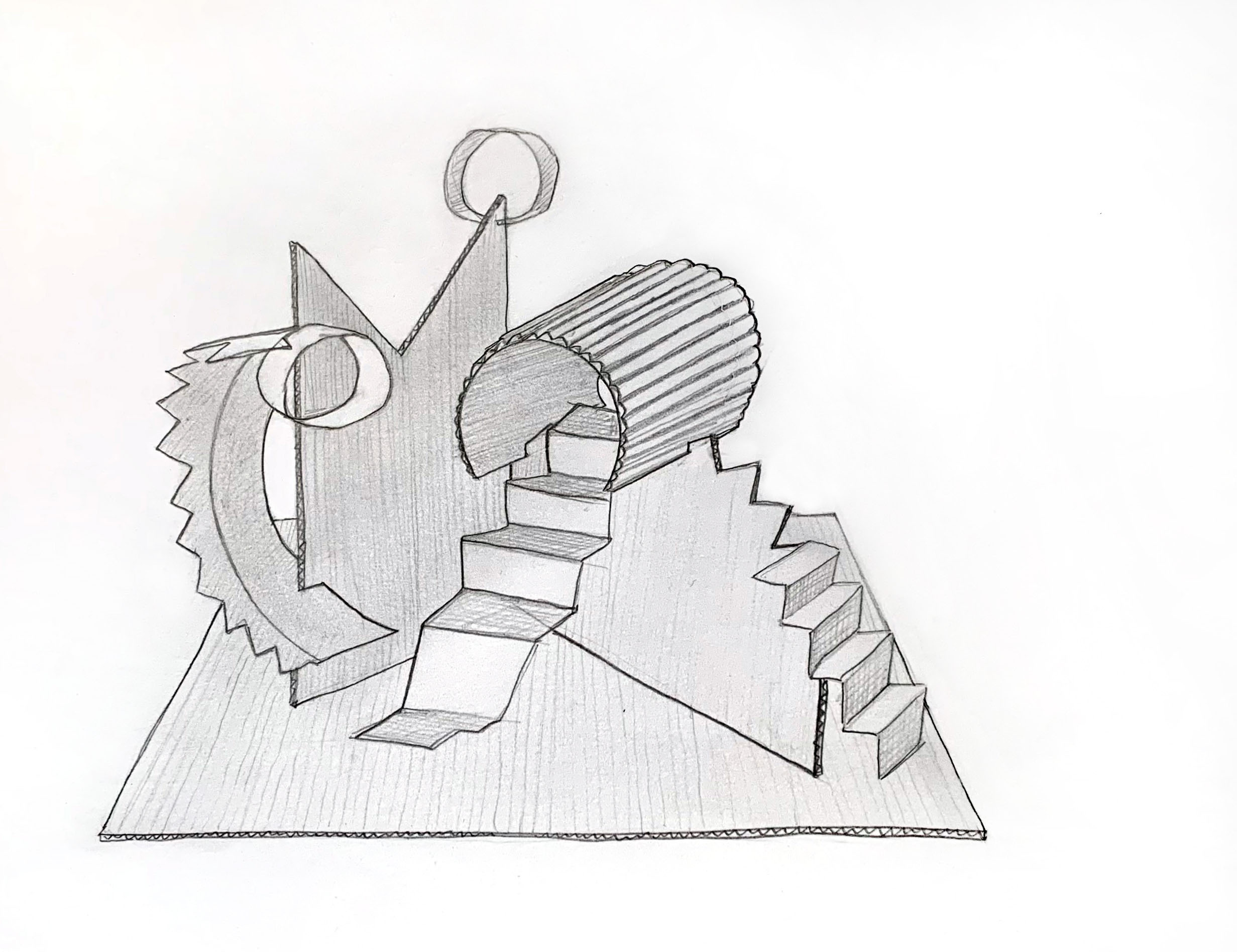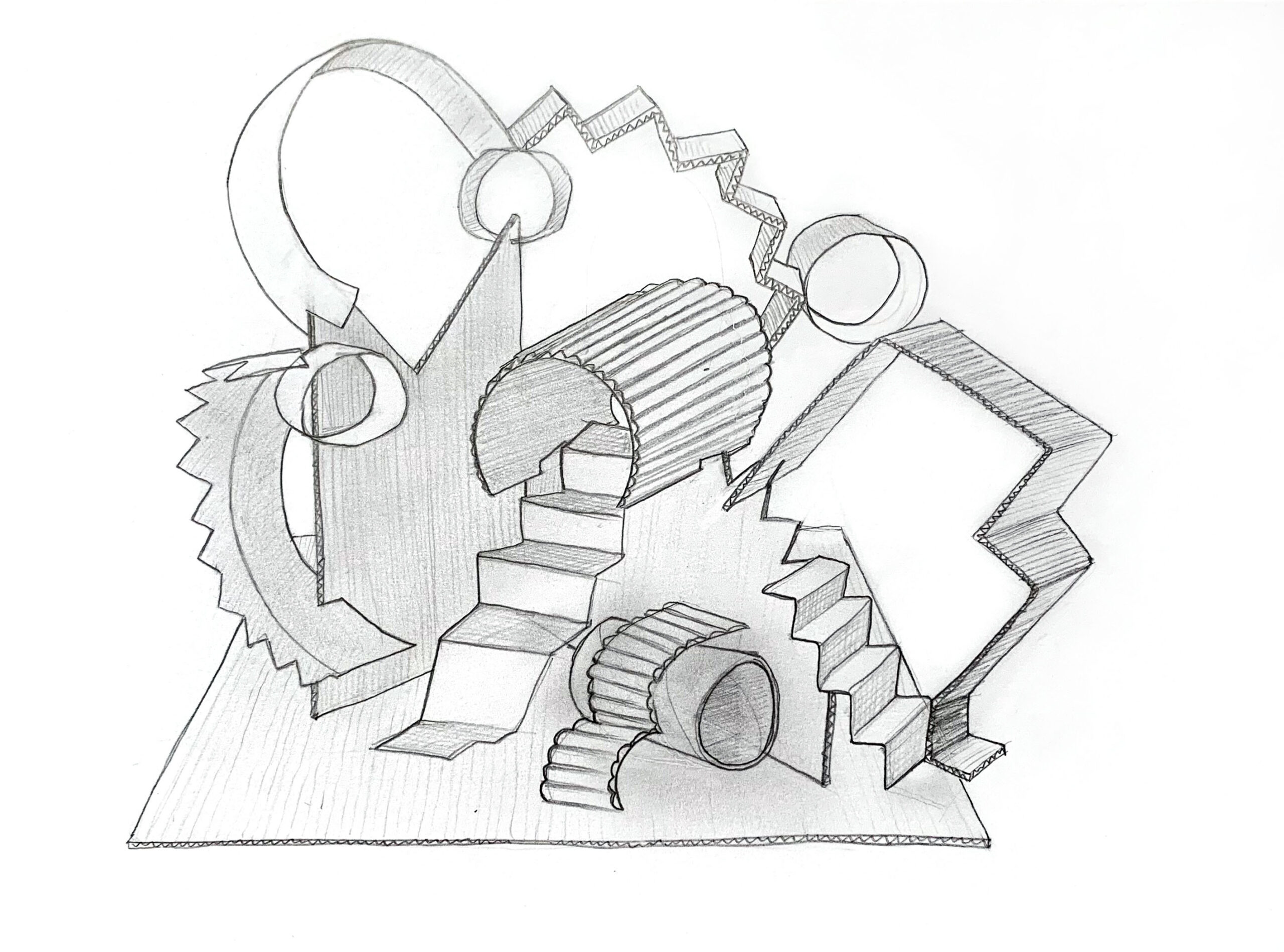Overview
Students will reflect on their art making using close-looking, speaking, writing, and/or sketchbook prompts.
Materials and Tools
- Pencil
- Sketchbook or one to two pieces of paper
- Imaginary play space sculpture from the previous lesson
Activities
Note: The following activities are written with sample language you may use with your students. Following the art-making lesson, you may choose as many reflection activities as desired for students to work on in class or independently.
Step 1: Close Looking: Siah Armanjani (10-15 minutes)
Hello, artists! Today we are going to continue to explore our materials and identify what makes them unique. To begin, let’s look at an artwork by Siah Armajani.
Note to Teachers: Before teaching with a work of art, spend some time looking closely at it on your own. Familiarizing yourself with the artwork will prepare you to guide the close-looking activity.
If your students are new to looking at art together, you can introduce the activity to students in the following way:
Today we are going to spend some time looking at and discussing a work of art together. When we look at art, there are no right or wrong answers. I’m going to ask you to look closely, share your ideas about what you see, and listen respectfully to each other’s ideas. Everyone’s ideas are important. We all see things differently, and when we look at art, we can learn to see through each other’s eyes.

Imagine that this sculpture is life-sized.
- How would you interact with it? Would you walk through it or around it? Climb on it?
- How do you imagine playing in this space?
- If you invited a friend, how would you play together?
Step 2: Close Looking at Student Work (10 minutes)
Now, look at your sculpture.
- If your sculpture were life-sized, how would you interact with it?
- Would you walk through it or around it? Climb on it?
- How do you imagine playing in this space?
- If you invited a friend, how would you play together?
Step 3: Writing Activity (10 minutes)
Let’s write about how you would interact with your sculpture.
Based on your students’ writing skills, choose from the options below:
Option 1: What are three action words that describe how you would interact with your play space? Write a sentence using each word.
Option 2: Use the sentence frames below to write two sentences about your artwork.
The title of my imaginary play space is ___________.
Three words that describe how I would interact with my play space are __________, __________, and __________.
I would play in my play space by _______________.
Step 4: Sketchbook Activity (10-15 minutes)
We’re going to look closely at our sculptures and make a drawing from observation and imagination!


Turn your sculpture around and choose one side to look at closely. Make a drawing of what you see. Now imagine what else you can add to it. Keep building by drawing additional elements and details.
After students finish their drawings, ask:
- What did you add to your sculpture in your drawing?
Resources
Siah Armajani. Dictionary for Building: From First Floor to Third Floor. 1974-1975, The Metropolitan Museum of Art, New York
More work by Siah Armajani: https://walkerart.org/collections/artists/siah-armajani
